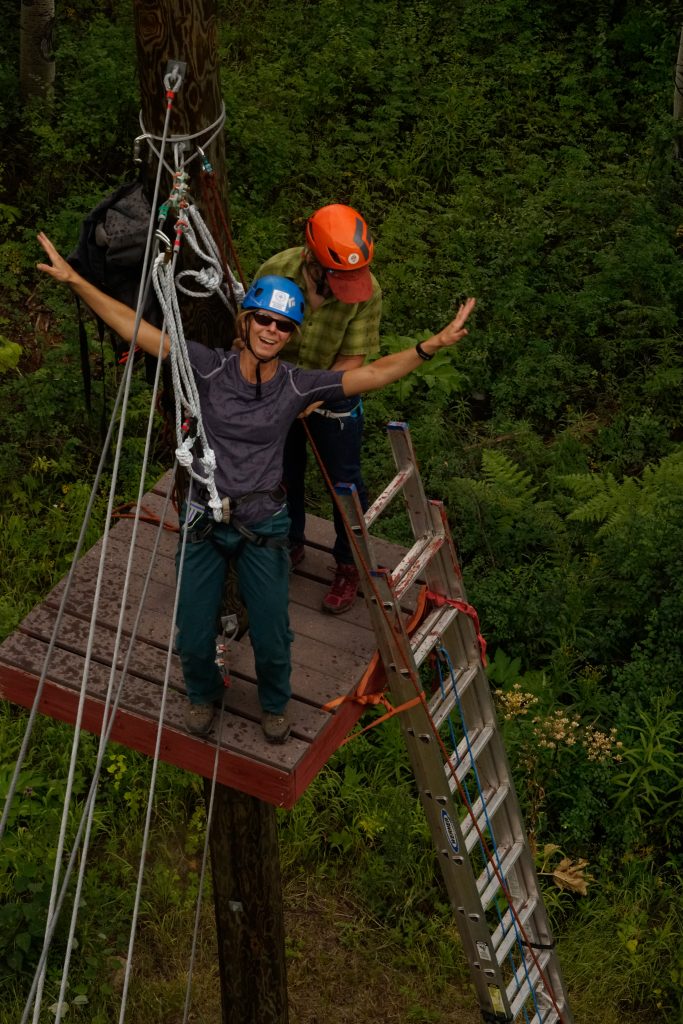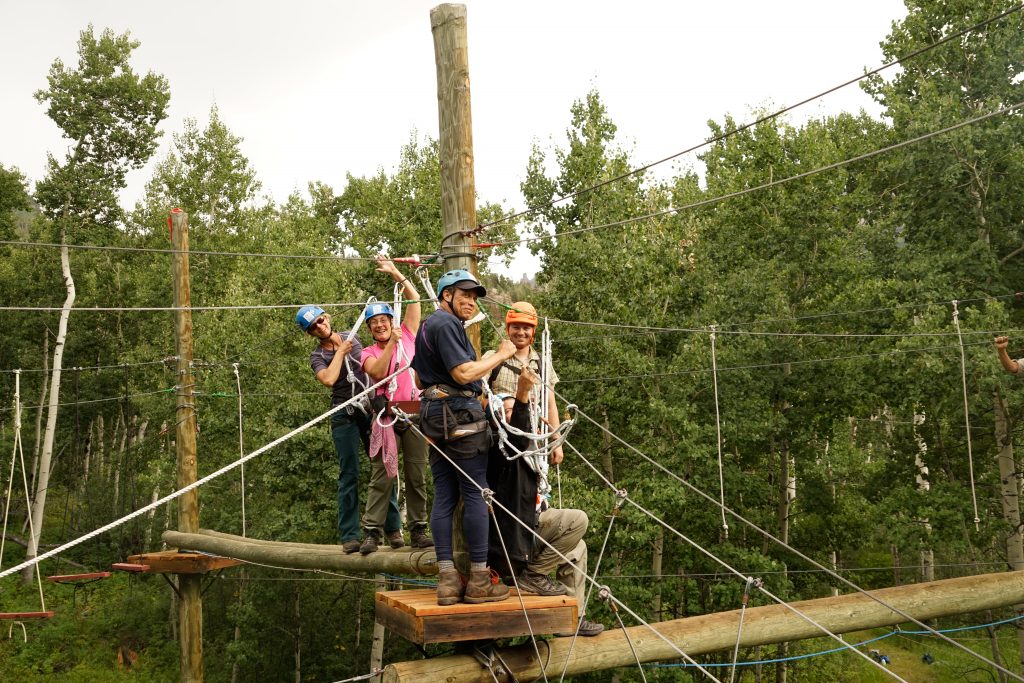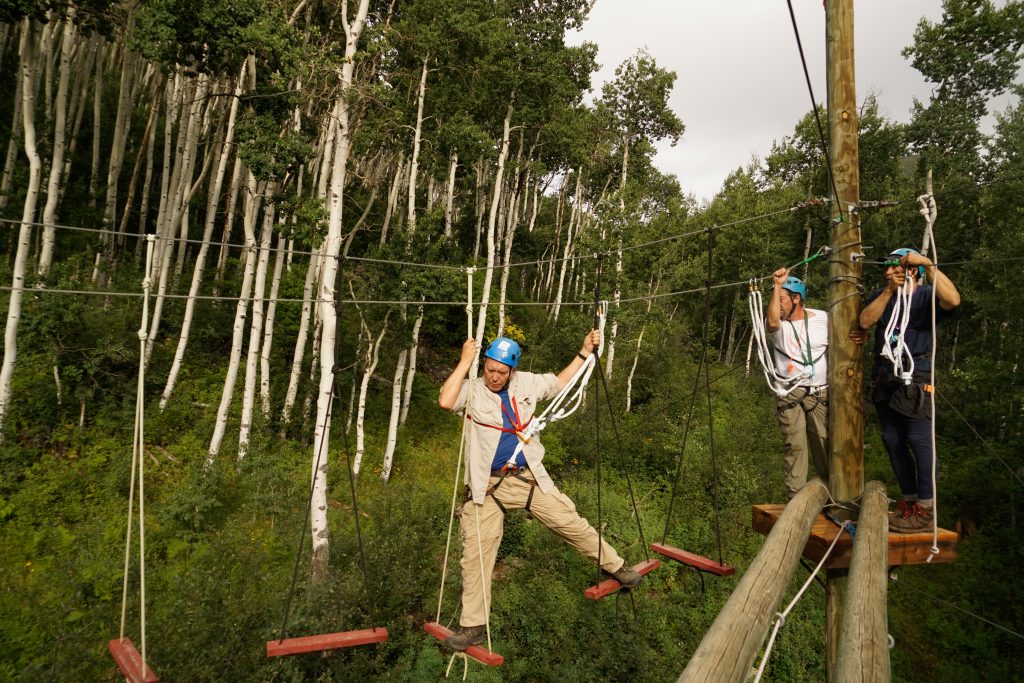John went on a COBS course in 1972 as a young man. This past year, he returned to the Colorado Rockies for another round. John was kind enough to write this post for us afterward, to share his unique experience on how the course experience changes alongside life experience. While many courses are open to anyone over the age of 18, John’s Colorado Rockies Alpine Backpacking course is specifically limited to adults 30+ or 50+. COBS also offers a Southwest Canyon Backpacking course for adults.
Our physical abilities and experience levels differed a lot. While I was disappointed in my ropes course and rock climbing performance, I did well on the backpacking. The packs were heavier than I thought they would be – over 35 pounds (OB equipment is on the old, sturdy side rather than new and ultra-light!). We didn’t hike as far as I thought we would. But we humped those big packs up steep slopes on narrow tracks that invited falls even from experienced hikers. We didn’t go very far or fast; but we went.
Our night campsites were pretty comfortable. We had two big tarps that would cover four people each and we naturally separated by gender. I missed the presence of a campfire around which to talk in the evening – backcountry rules don’t allow them now – and so we naturally went to bed with the dark.
Our peak attempt was cut short by lightning, but we got up over 12000 feet, mostly on a rocky slope without a trail. Our Senior Instructor, Matt, scouted a route ahead while his assistant, Skye, made sure our slower members did not fall behind. Those of us who did better on the rocks coached those who did not, pointing out hand holds and safe steps. After we got down the hill, Matt announced our solo would be that night. We all spread out across our little valley, seeking campsites that did not have line of sight to another patrol mate’s camp. And we managed to do so: by dark we were all out on our own, out of sight of each other. In getting a low shelter up, I realized that I had forgotten most of my Boy Scout knots – and resolved to re-learn them before I did another course. That night it was cold and rained a little, but I had the satisfaction that my rudimentary shelter kept me mostly dry.
My only real problem on the course was fatigue because I could not sleep well, even with the aid of Tylenol PM. The ground was just too hard and the old-fashioned thin ensolite pads (just like we used in 1972) were insufficient to give my older body the cushioning I needed to get to sleep. After two days of little sleep, I really lost a lot of effectiveness, tripping and falling several times although I am usually sure footed. (Next time on course I will bring my own Therma-Rest pad.)
Although the group dynamics of my 1972 patrol – both positive and negative – really didn’t have time to develop, it didn’t really matter. By the time we hiked out after four days in the field, we were the “Hell Yeah Patrol,” reflecting a certain gritty reality that characterized our common outlooks on life and its challenges. Not sure who started the name, probably from the country song, but it fit and it stuck.
The end of the course was a little anticlimactic. We cleaned equipment, got a shower and our travel clothes, had a discussion about our reactions about the course – then said our goodbyes and headed home. For me, it was a dream of decades come true: I had returned to the high mountains and done it again. I had kept a promise whispered to a friend from 1972, now long dead: not to give up on living my dreams. Others had realized their own dreams, doing things they had never done, realizing that possibilities to solve problems or heal relationships were now theirs where before they were not.
After we went home we stayed loosely in touch with each other. We traded pictures on a photo sharing website. One patrol mate had a bout with cancer, reminding us all of the fragility of life. Two others worked together on an interior decoration project. We rejoiced in our instructors’ achievements: one was married; the other got into a Ph.D. program. And I kept two promises to myself: I went out alone on the Appalachian Trail (AT) to test the idea of starting the whole AT hike in sections, starting in May, 2017. And I went downhill skiing for the first time in 7 years, proving to myself that I could still do both.
Is OB for everyone? Probably not; few things are. But it can be for us older people, however defined. I would love to go on one of the longer OB courses – and I haven’t given up getting fit enough to do it. Two weeks on the AT in May will test that idea out. And another 8-day course (or 9-day if Peter O’Neil accepts my suggestion to add a day in order to get in a full Solo experience!) in Colorado when I am 70 in 2021 is definitely on my calendar.
But all of that is just doing stuff. What is important is that OB is a state of mind and identity. It is being a person who stakes out ownership of that precious spot on the edge, in which risk is simply a necessary way of life. It is a decision to be – or in my case, to return to being – someone who is willing to honestly reexamine old ideas, rules and prejudices, and to change those that are wrong or don’t fit or work anymore. It is being someone who serves, strives and doesn’t yield to adversity, years or fears. It is being someone who is resilient, unafraid to love people and life.
Yes, that’s a big renewal out of only six days in the mountains. Some would say it’s not real; that such “peak experiences” fade and wither in the wear and tear of every day. But it does not have to be that way. For me. Or for you. Hell Yeah!







